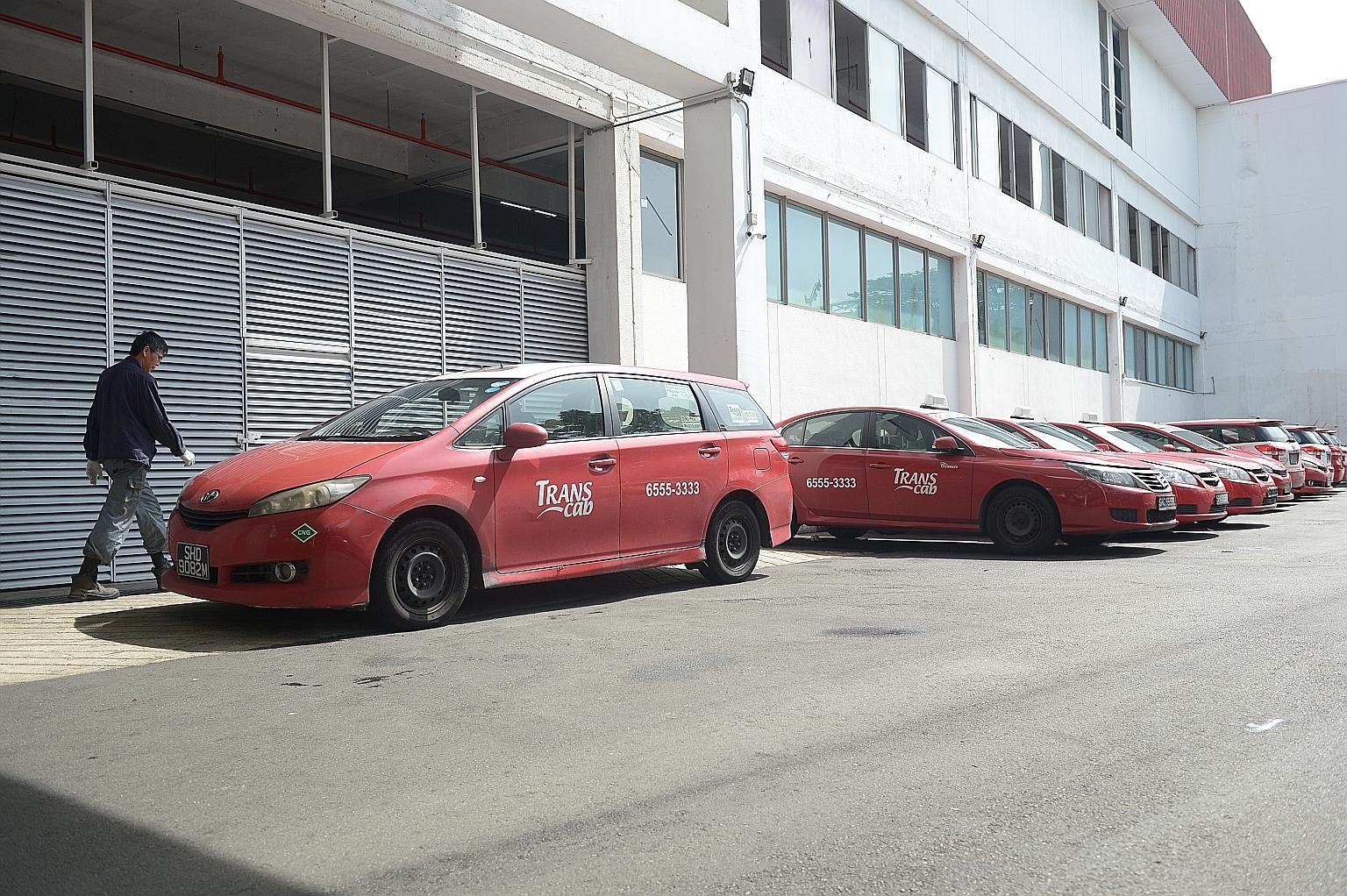Last CNG taxi scrapped, gas cars down to 1,000
Limited refuelling stations and poor cost advantage among reasons for move away from CNG
Sign up now: Get ST's newsletters delivered to your inbox

The last of Trans-Cab's CNG taxis to be taken off the road parked at the company's premises in Ang Mo Kio.
ST PHOTO: ALPHONSUS CHERN
Follow topic:
Compressed natural gas (CNG) taxis have come to the end of the road, after blazing a trail which fizzled out as quickly as it started.
The last CNG taxi, belonging to Trans-Cab, was scrapped late last month, marking the end of efforts to encourage cabbies - who clock three to seven times the distance of the average motorist - to opt for the cleaner fuel.
Trans-Cab managing director Teo Kiang Ang attributed the demise of CNG cabs to several factors, including restrictions imposed on the transportation and storage of CNG that have made the setting up of new stations onerous.
Mr Teo admitted that CNG cabs tended to experience more technical glitches, and cabbies disliked having access to only three refuelling stations.
Trans-Cab was a strong supporter of CNG. Mr Teo opened the world's biggest CNG refuelling station near Jurong East in 2009.
He has applied for a change of use for his 7,066 sq m station site in Old Toh Tuck Road, but has ruled out converting it into a petrol station.
Asian Clean Fuels Association director Clarence Woo said CNG is a cleaner fuel compared to diesel or petrol, but without subsidies, it is not viable. "With the limited number of refuelling stations, cabbies will not want to inconvenience themselves unless the cost is lucrative," he said. "Moreover, a CNG car requires space for the CNG tank, which doesn't help especially for the cab driver who has to transport passengers with luggage."
2,836 Number of CNG cabs in 2011.
At their height in 2011, there were 2,836 CNG cabs here, making up 10.5 per cent of the taxi population. The number dwindled to around 1,000 in 2016, and by the end of last year, all were gone.
But cabbies are not the only ones abandoning CNG.
According to Land Transport Authority figures, the CNG car population stood at around 1,000 by the end of last year - less than half the peak population of 2,706 in 2010.
Even bus operators have moved away from gas - with the number of CNG buses plunging to 13 as at the end of last year, from a peak of 44 in 2010.
Nanyang Business School's Adjunct Associate Professor Zafar Momin attributed the waning interest in CNG cabs also to economic reasons. "The number of CNG taxis and CNG private vehicles rose quickly when greener alternative engines started gaining traction and their purchases were incentivised by the attractive Green Vehicle Rebate," he said.
"With the introduction of the Carbon Emissions-based Vehicle Scheme in 2013, the relative attractiveness of buying a CNG vehicle diminished. In addition, the inconvenience of refuelling CNG at relatively few locations and the lack of any operating cost advantage versus diesel fuel made choosing the CNG option completely unattractive."
Prof Momin added that the recent spate of CNG vehicle fires "put a nail in the coffin". He noted, however, that CNG will continue to be a viable alternative fuel in other countries, "especially where CNG commands a significant cost advantage compared to diesel".

